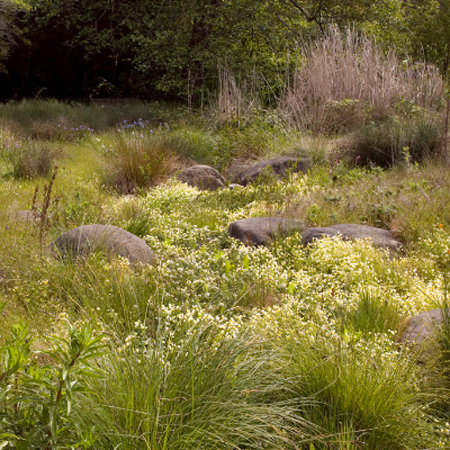 Non-stop rain in New England for a few days, converting the entire countryside to a
Non-stop rain in New England for a few days, converting the entire countryside to a wetland swamp. It brings drains to mind. French Drains aren't French. They are named after Mr. Henry Flagg French of Massachusetts, a judge and a drainage expert. Good concept.
This fellow build a good one. I like the fact that the word "tile" is still used for PVC pipe.
Glad I do not need any of them, though. In 1824, farmers did not build their houses where they would get flooded, where there was an underground spring, where there was poor drainage, or where they would have wet cellars. They checked first.
They did not consider every piece of land to be a building site. Nobody builds on a flood plain, a beach, or on a hilltop. It's just stupid.
Photo on right is a shallow French drain. Holes down, of course. (Dummies are known to install them with the perforations facing up.) You can rent one of those mini-backhoes, have a load of gravel delivered, and make one yourself. A plain old-fashioned ditch or swale works too.
Photo below is a constructed swale. Man-made or natural, a swale is just a pleasant drainage ditch or depression. A small vale, you might say.
In all likelihood, making these today probably violates some federal laws. After all, the EPA now claims to regulate ditches. At the farm, we have plenty of man-made ditches and swales, but none made recently.



 Non-stop rain in New England for a few days, converting the entire countryside to a
Non-stop rain in New England for a few days, converting the entire countryside to a 